kohlrabi: Grow & Care for Brassica oleracea
Written by Iris
Nov 08 2021
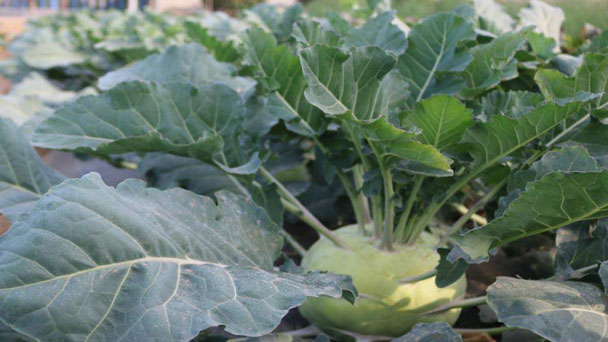
kohlrabi (Brassica oleracea) plants are a fast-growing and often overlooked treasure that can be grown in a vegetable garden. This Brassica oleracea gem is attracting increasing interest among gardeners, and with good reason. kohlrabi (Brassica oleracea) produces bulbs, stems and leaves on the ground, making it an interesting crop to watch for ripening.
Plant in full sun.
Nutrient-rich, well-draining soil will produce the best results.
Tip: Because it can be grown in shallower soils, kohlrabi is a great alternative to turnips or rutabagas.
Soil pH should be slightly acidic to neutral (6.0 to 7.0), though kohlrabi is tolerant of slightly alkaline soils (7.0 to 7.5), too.
Avoid planting kohlrabi where other vegetables in the Brassica family have been grown in the previous 2 or 3 years. This helps to prevent the spread of disease and nutrient deficiencies.
Kohlrabi isn't a heavy feeder, but will benefit from having a bit of aged manure or compost worked into the soil prior to planting. Use about 1 inch of fertilizing material per 1 square foot of soil.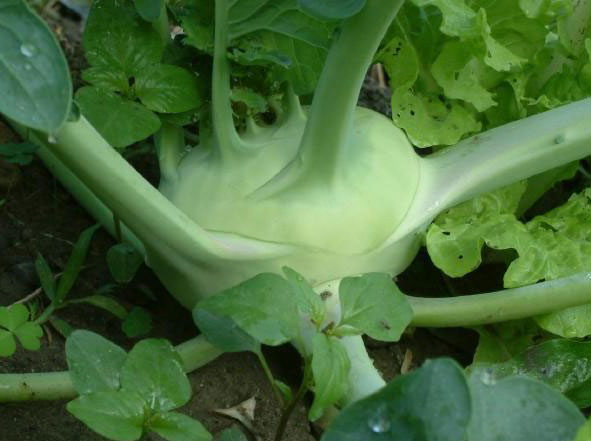
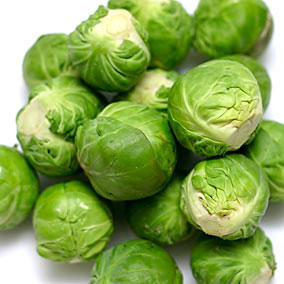
Plant seeds indoors approximately 4 to 6 weeks before the final frost.
Direct sow seeds directly in the garden bed in mid to late summer to grow a fall or early winter crop.
Seeds should be planted at a depth of ¼ inch to ½ inch.
Transplant seedlings when they are 3-4 weeks old and after the danger of frost has passed.
Plant root balls of transplants so that they are level with the ground so that the bulbous portion will grow above the soil and not rot out.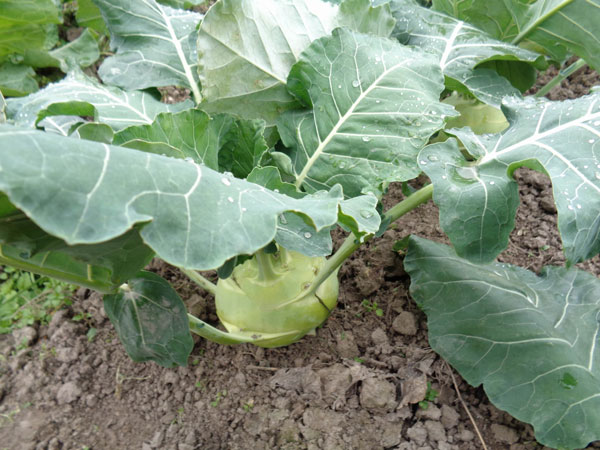
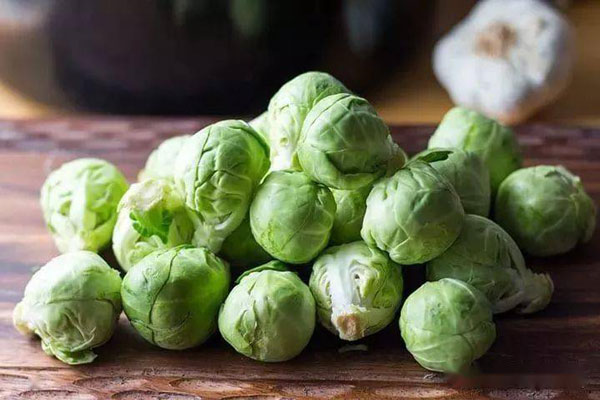
When growing kohlrabi in containers, regular fertilization is a must as they will drain the soil of nutrients regularly. However, they have shallow but large root systems, so apply your fertilizer in a ring around the plant so that it does not make contact with the bulbous stem base. The same is true of in-ground fertilization, but there's less risk of water washing the fertilizer back against the plant in a normal bed setting.
Liquid fertilizers are also an option, but only if your soil will retain the dissolved nutrients. If you have ample supplies of organic matter in the soil, regular applications of liquid fertilizer will work.
THe beet armyworm will cause leaves to appear skeletonized due to heavy feeding. Use organic methods to control this insect such as Bacillus thuringiensis.
Cabbage aphids can stunt plant growth and even cause death. THe insects are gray-green and will be visible on the leaves. These aphids only feed on cruciferous plants but can survive on related weeds. If the infestation isn’t bad, prune out the affected leaves. However, if the infestation is heavy, spray the sturdier plants with a strong jet of water to knock the aphids off the leaves.
Cabbage loopers will cause extensive damage in the leaves. The caterpillars are green and have white lines on each side of their body. They will overwinter in crop debris. Handpick the larvae off the plants or apply Bacillus thuringiensis to kill the younger larvae.
Alternaria leaf spot will cause small spots on the leaves that are darker and will later turn brown or gray. Lesions may appear round or angular. The lesions may then form rings and become brittle and crack. This disease is most likely to become a problem during cool, wet periods. The best ways to prevent this from happening is by planting pathogen-free seeds, practice crop rotation and apply the correct fungicides to control the Alternaria leaf spot when it occurs.
Black rot will cause seedlings to develop yellow or brown leaves that wilt and collapse. It is most prevalent in warm, wet conditions. To control this disease, practice good sanitation, plant disease-free seed and rotate crops.
Damping-off will kill seedlings after they germinate. Symptoms include black rot girdling on the stem, and the seedlings may remain upright but the stem will appear constricted or twisted, which is why damping-off also is known as wirestem. It favors cool temperatures. To prevent this, plant pathogen-free seeds and apply fungicides when necessary.
Clubroot will cause plants to be slow growing or stunted, and the leaves will turn yellow and wilt during the day. To avoid this disease from occurring, plant certified seeds and apply lime to the soil.
Downy mildew will cause irregular yellow patches which turn brown. These patches are located on the leaves. A gray growth will appear on the bottom of the leaves. The disease is more likely to occur when the environment is cool and wet. To prevent this, remove crop debris and practice good crop rotation.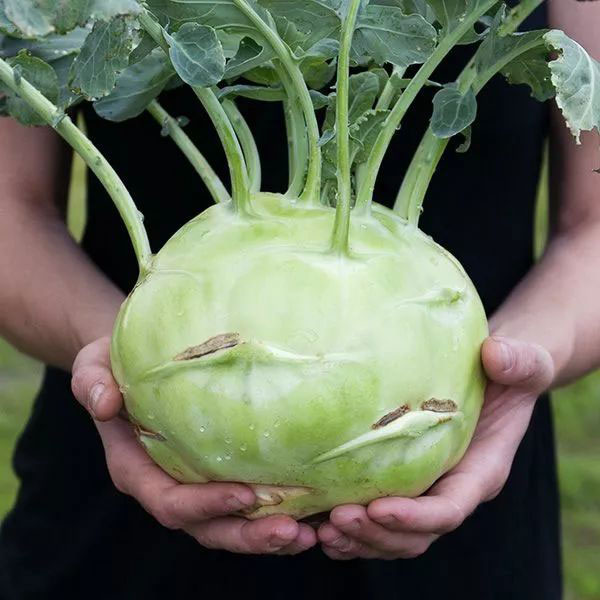
How to Choose and Prepare a Planting SiteWhen to Grow kohlrabi (Brassica oleracea)How to Grow kohlrabi (Brassica oleracea)Steps for kohlrabi (Brassica oleracea) Propagation with SeedsHow to Care for kohlrabi (Brassica oleracea)LightSoilWaterTemperature and HumidityFertilizerPests and DiseasesVarieties of kohlrabi (Brassica oleracea)kohlrabi (Brassica oleracea) FAQIs kohlrabi easy to grow?Does kohlrabi transplant well?Is kohlrabi a perennial?
How to Choose and Prepare a Planting Site
Kohlrabi grow in most soil types but they perform best in the following conditions:Plant in full sun.
Nutrient-rich, well-draining soil will produce the best results.
Tip: Because it can be grown in shallower soils, kohlrabi is a great alternative to turnips or rutabagas.
Soil pH should be slightly acidic to neutral (6.0 to 7.0), though kohlrabi is tolerant of slightly alkaline soils (7.0 to 7.5), too.
Avoid planting kohlrabi where other vegetables in the Brassica family have been grown in the previous 2 or 3 years. This helps to prevent the spread of disease and nutrient deficiencies.
Kohlrabi isn't a heavy feeder, but will benefit from having a bit of aged manure or compost worked into the soil prior to planting. Use about 1 inch of fertilizing material per 1 square foot of soil.

When to Grow kohlrabi (Brassica oleracea)
Sow seeds in early spring. Make small plantings every 2 to 3 weeks for continuous spring and early summer harvest. For an especially early harvest, plants may be started indoors or in the greenhouse in flats to be transplanted into the garden as soon as the ground becomes workable. Like cabbage, kohlrabi plants can stand some frost. One or two late plantings can also be made in mid-summer at the same time as late cabbage. In very hot weather, these seedlings may benefit from some shade when they are small.
How to Grow kohlrabi (Brassica oleracea)
Steps for kohlrabi (Brassica oleracea) Propagation with Seeds
Kohlrabi can be started indoors in seed trays or have their seeds sown directly into the ground. Combining the practice of both methods can ensure the successful harvest of these vitamin-rich garden gems.Plant seeds indoors approximately 4 to 6 weeks before the final frost.
Direct sow seeds directly in the garden bed in mid to late summer to grow a fall or early winter crop.
Seeds should be planted at a depth of ¼ inch to ½ inch.
Transplant seedlings when they are 3-4 weeks old and after the danger of frost has passed.
Plant root balls of transplants so that they are level with the ground so that the bulbous portion will grow above the soil and not rot out.

How to Care for kohlrabi (Brassica oleracea)
Light
Kohlrabi needs a full day of sun to grow plump and develop its characteristic flavor. Because this is a fast, early-season vegetable, you may be able to plant it near deciduous trees that haven't leafed out yet.Soil
Kohlrabi needs fertile and well-drained soil to grow and produce healthy stems, leaves, and its bulbous base. Mulch the soil with plenty of organic matter for added nutrition and water absorption. Loose, well-worked soil is best for your kohlrabies to truly shine. The ideal soil pH level for growing kohlrabi ranges from 6.0 to 6.8.Water
When the kohlrabi has established itself, it will require about 1 to 2 inches (2.5 to 5 cm) of water a week. You should water multiple times a week, being careful to avoid over-saturating the soil, in order to limit the risk of causing any rot, molds or fungus from infecting your plant.Temperature and Humidity
Like many cruciferous vegetables such as broccoli and Brussels sprouts, kohlrabi grows best in cool weather. When summer temperatures arrive, kohlrabi is done growing. Plants you didn't get around to harvesting will be prompted by warm weather to bolt, or produce flowers.
Fertilizer
Fertilizing kohlrabi is a little tricky as they're heavy feeders. Start with rich soil, to begin with, and side-dress every few weeks with well-rotted cow manure. Alternately, begin with the rich soil but opt for regular fertilization using a nitrogen-rich fertilizer. A 10-5-5 should suffice, but follow manufacturer's instructions for the frequency of application.When growing kohlrabi in containers, regular fertilization is a must as they will drain the soil of nutrients regularly. However, they have shallow but large root systems, so apply your fertilizer in a ring around the plant so that it does not make contact with the bulbous stem base. The same is true of in-ground fertilization, but there's less risk of water washing the fertilizer back against the plant in a normal bed setting.
Liquid fertilizers are also an option, but only if your soil will retain the dissolved nutrients. If you have ample supplies of organic matter in the soil, regular applications of liquid fertilizer will work.
Pests and Diseases
When growing vegetables, it is always exciting to care for the plant throughout its growing phase and then harvest it for delicious recipes later on, but one thing to watch out for is pests and diseases. Different plants are susceptible to different types of pests and diseases, and Kohlrabi can fall victim to several different pests and diseases, many of which are similar to the problems affecting greens.- Pests
THe beet armyworm will cause leaves to appear skeletonized due to heavy feeding. Use organic methods to control this insect such as Bacillus thuringiensis.
Cabbage aphids can stunt plant growth and even cause death. THe insects are gray-green and will be visible on the leaves. These aphids only feed on cruciferous plants but can survive on related weeds. If the infestation isn’t bad, prune out the affected leaves. However, if the infestation is heavy, spray the sturdier plants with a strong jet of water to knock the aphids off the leaves.
Cabbage loopers will cause extensive damage in the leaves. The caterpillars are green and have white lines on each side of their body. They will overwinter in crop debris. Handpick the larvae off the plants or apply Bacillus thuringiensis to kill the younger larvae.
- Diseases
Alternaria leaf spot will cause small spots on the leaves that are darker and will later turn brown or gray. Lesions may appear round or angular. The lesions may then form rings and become brittle and crack. This disease is most likely to become a problem during cool, wet periods. The best ways to prevent this from happening is by planting pathogen-free seeds, practice crop rotation and apply the correct fungicides to control the Alternaria leaf spot when it occurs.
Black rot will cause seedlings to develop yellow or brown leaves that wilt and collapse. It is most prevalent in warm, wet conditions. To control this disease, practice good sanitation, plant disease-free seed and rotate crops.
Damping-off will kill seedlings after they germinate. Symptoms include black rot girdling on the stem, and the seedlings may remain upright but the stem will appear constricted or twisted, which is why damping-off also is known as wirestem. It favors cool temperatures. To prevent this, plant pathogen-free seeds and apply fungicides when necessary.
Clubroot will cause plants to be slow growing or stunted, and the leaves will turn yellow and wilt during the day. To avoid this disease from occurring, plant certified seeds and apply lime to the soil.
Downy mildew will cause irregular yellow patches which turn brown. These patches are located on the leaves. A gray growth will appear on the bottom of the leaves. The disease is more likely to occur when the environment is cool and wet. To prevent this, remove crop debris and practice good crop rotation.

Varieties of kohlrabi (Brassica oleracea)
Kohlrabi belongs, like kale, cauliflower, or white cabbage, to the cabbage family. Basically, a distinction is made between early and late varieties on the basis of their sowing and harvesting times. However, there are now also many varieties of kohlrabi that can be grown throughout the season. Plants with light green to almost white tubers and green leaves are the most common in this country. A classic is the Superschmelz variety; its yield can weigh several kilos, and yet it remains very tender. If you prefer a bit more color, there is also kohlrabi with blue-violet-veined leaves and shells, such as Azur Star and Blaro. Their tubers grow and ripen more slowly, but taste even more tender than the white ones.kohlrabi (Brassica oleracea) FAQ
Is kohlrabi easy to grow?
In cool weather conditions, kohlrabi is easy to grow. Warmer weather can cause problems, particularly if paired with humidity. Try to grow these plants in the cooler months of the year.Does kohlrabi transplant well?
Kohlrabi seedlings can be transplanted, but do so very gently. Try not to damage the roots to avoid the risk of transplant shock.Is kohlrabi a perennial?
Technically speaking, kohlrabi is a biennial plant. For the purposes of eating, these plants are usually grown as annuals and harvested during that first year.Read Next:
15 Fall Vegetables to Plant for Your Autumn Garden
Latest Updated
- Benefits of Bugleweed - 7 Science-backed Health Benefits
- Bugleweed Dangers & Side Effects - Is It Poisonous?
- How to Plant Evergreen Trees - What You Should Know
- When to Plant Evergreens - Grow Guide for Evergreen Trees
- 12 Wonderful Evergreen Shrubs for Your Garden
- 12 Popular Evergreen Plants with Pictures for Beginners
- When And How To Prune A Lilac Bush Like a Pro
- How to Grow & Care for Lilac Vine (Hardenbergia Violacea)
- Japanese Lilac Tree (Syringa Reticulata) Care & Propagation Guide
- Shumard Oak Pros and Cons - What to Know
Popular Articles
- Winter maintenance of Antirrhinum Majus
- How to Grow Terminalia Mantaly Tree
- How to Grow and Care for Crossostephium Chinense
- How to grow Antirrhinum Majus in spring
- Peristeria Elata (Dove Orchid) Profile: Info & Care Guide
- Underwatered Snake Plant (Sansevieria Trifasciata) - Signs And How To Fix
- How to Care for Brazilian Jasmine Plant (Mandevilla Sanderi)
- How to Grow & Care for Graptopetalum Purple Delight in Summer
- Rosa Chinensis (China Rose): Plant Growing & Care Tips
- How to Care for Baby Sun Rose (Aptenia Cordifolia)